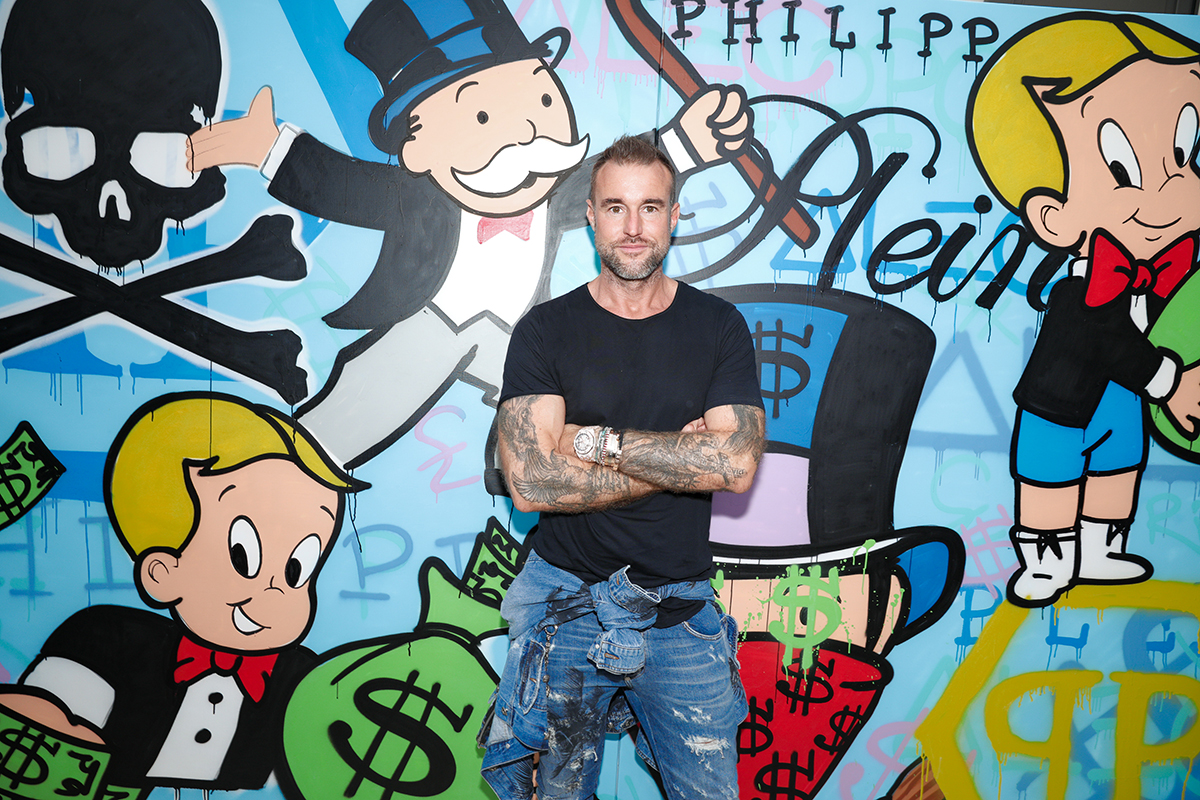
Philipp Plein at his Resort show during the Cannes Film Festival in 2018
Philipp Plein is the partying designer for the Monaco private-jet set, who has also retained his status among fashion’s elite. Harriet Quick meets a man with a keen business brain and the unashamedly alpha swagger of a self-made global entrepreneur
“I can remember going to Salone del Mobile for the launch of my furniture line. I rented a truck and drove to Milan with my former girlfriend. We set up the booth ourselves and we slept in a motel. It turned out the motel was also operating as a brothel. Each morning, we had to leave the room empty as it was booked for ‘use’,” says Philipp Plein. “We had dinner at the Autogrill on the highway every night. It was all we could afford.” Plein’s first foray in the business of design was more than 20 years ago and the memory has a fuzzy, sleazy halo.
Follow LUX on Instagram: luxthemagazine
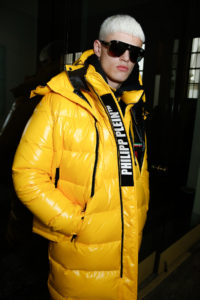
A model in Philipp Plein AW19
Today, the Philipp Plein empire encompasses menswear and womenswear collections, accessories, Philipp Plein Sport and 120 stores worldwide (some lease, others franchise), plus the menswear brand, Billionaire (a majority stake of which was purchased from Formula One managing director Flavio Briatore in 2016; it caters for gentlemen who prefer blazers to leather perfectos). It’s been reported that the group generates annual revenues of around €300 million.
As founder, CEO and creative director, Plein exudes the pride of a self-made man. The extrovert alpha male/female personality of his eponymous brand has earned legions of fans who are not in accord with the prissy propriety of high fashion. The stores (on the rue de Rivoli in Paris, London’s Bond Street, Passeig de Gràcia in Barcelona and Soho in New York City) gleam with steel and shiny leather, embellished with Swarovski crystals. Mannequins feature six packs that spell machismo, and everything is dosed in irony.
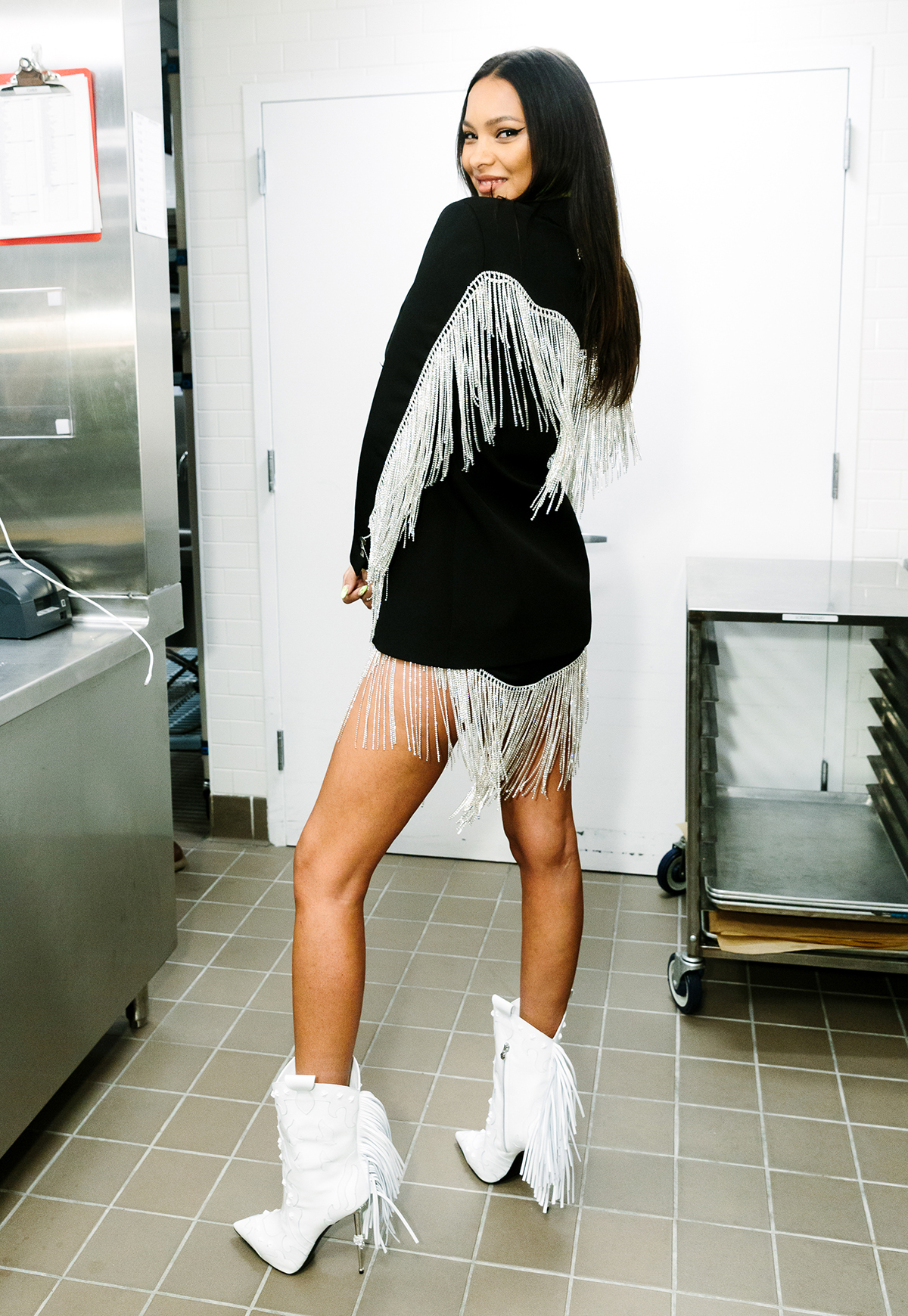
A model backstage at Plein’s AW19 show in New York.
“The experience of building a business from scratch makes you really appreciate things,” says Plein of his trajectory from nobody to head of a fashion empire with 1.7 million Instagram followers. “Nothing was a ‘given’ or ‘easy.’ What people forget when they see the stars of today are the years of dedication and sacrifice. People suffer to reach certain goals.” He doesn’t go into the sacrifices he made, yet it is blatantly clear that Plein, who has an art gallery of tattoos on his considerable biceps, is an ‘all over everything’ workaholic. “I don’t get dropped, I drop the best sh*t in the game – on to the next one,” reads an Instagram post on 3 May 2019, with an image of a female model wearing fantasia eye make- up and a knockout crystal embellished body suit. Ahead of the Met Gala Camp: Notes on Fashion extravaganza, it was decidedly timely.
Read more: Gaggenau’s latest initiative to support emerging artisans
The Munich-born entrepreneur (son of a heart surgeon) possesses a fiery cocktail of Italian flare and Teutonic discipline. He launched into the design business creating sleek stainless-steel beds for dogs and then furniture for humans (he still owns 50% of the small steel factory that made his range) and went on to launch a line of upmarket objets and trophy tables with leather inlays. Dog owners from Miami to Zurich fell in love with the designer pet accessories and via that venture, the young Plein received an on-the- job education in the tastes and materialistic whimsies of the super-wealthy.
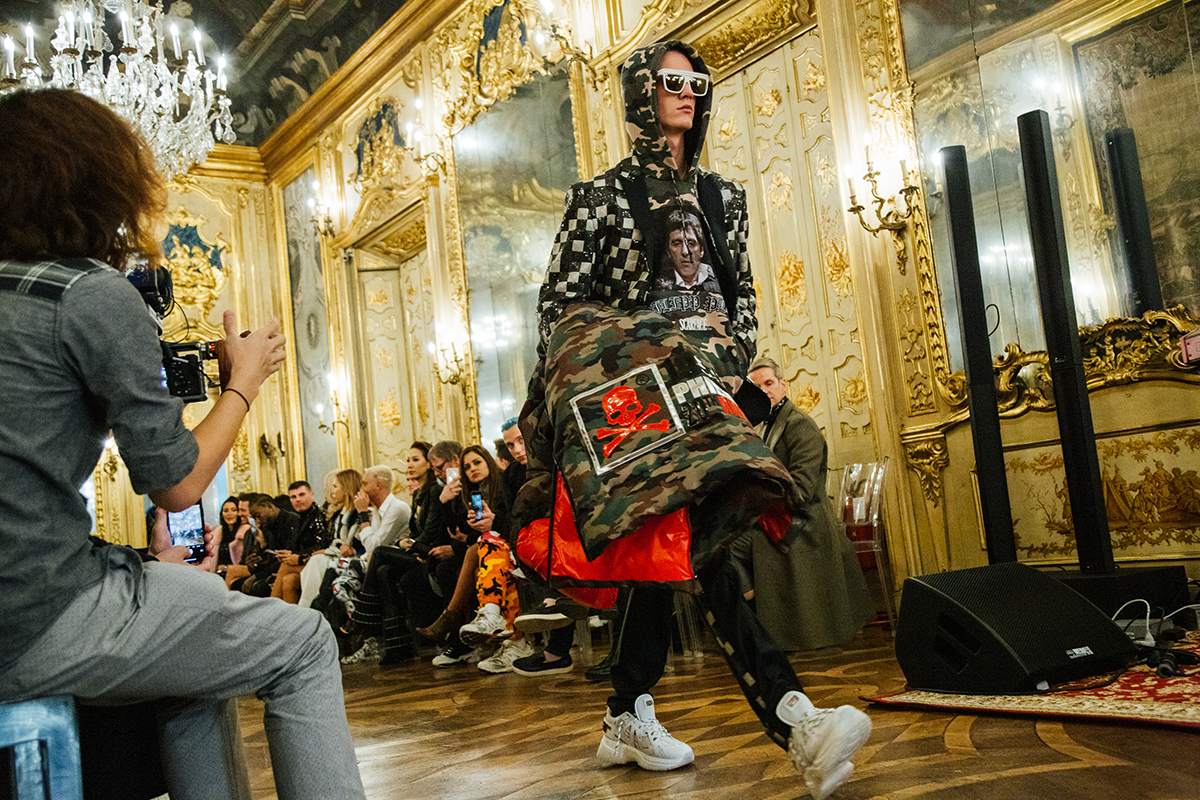
The Philipp Plein AW19 catwalk show in Milan
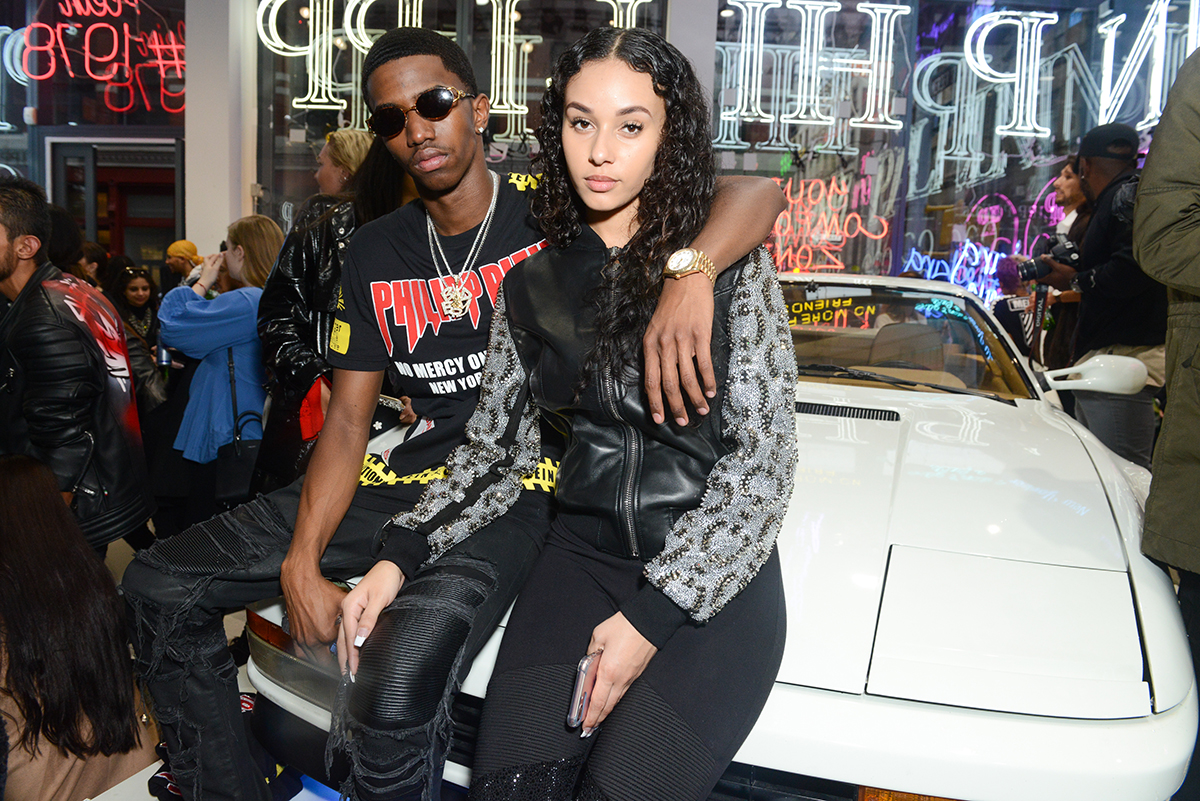
Christian Combs and Breah Hicks at the opening of a new Philipp Plein store in NYC
Philipp Plein the label had planted its roots. Next came the Swarovski crystal-skull- embellished military jackets. They sold from rails at furniture trade shows. That led to an apparel collection featuring more leather, shredded jeans, diva dresses and mini skirts with the kind of proportions, detailing and quality (the collection is made in small Italian factories) that made them several cuts above the average rock ’n’ roll cliché. The collections’ fun- loving rebelliousness appealed to a generation of pop stars, moguls and party kids. Jasmine di Milo, Mohamed Al Fayed’s daughter, was one of Plein’s first customers and bought the line for her mini in-store boutique at Harrods.
“I started marketing the brand into Europe – Germany first and Italy, France and the UK followed,” says Plein. “In the mid oughts, we entered the Russian market and then China. It was a wholesale brand and we went to all the major trade shows.” On early trips to New York’s Coterie show, even his teenage sister came along for the work/vacay ride.
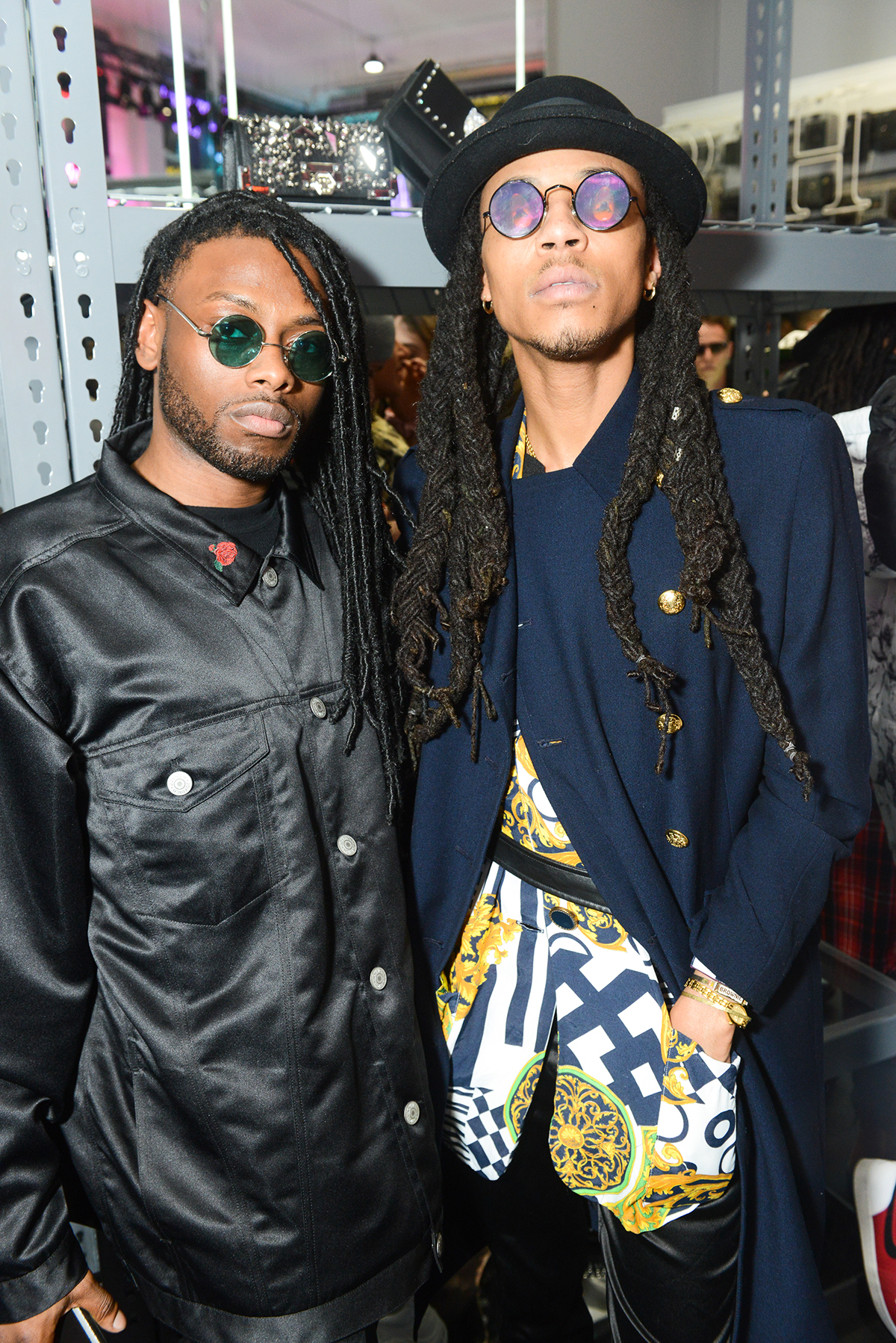
Socialites and celebrities gathered for the opening of the new Philipp Plein store in New York in 2018
The Plein lifestyle – fast cars, nightclubs, champagne, sex – proved a lure. While the level of flash made the arbiters of taste wince, no one could deny the coherence and the quality. This was the era of kick-ass disruption. Stella McCartney and Phoebe Philo were turning Chloé into a ‘girl power’ brand, Alexander McQueen was confounding the world with his fusion of romantic beauty with punkish violence while Nicolas Ghesquière at Balenciaga was reviving the moribund house with his electric hybrid mix of futurism, utility and armour.
Through these players, the luxury fashion world was reignited with guts and creative daring. The trajectory was bigger, higher (remember those teetering platform heels?) and in the case of Tom Ford’s Gucci, ever sexier renditions of slinky jersey dresses and low-cut blouses. Plein, who dubbed himself a heroic outsider, was astutely aiming in on the person who did not like concepts and intellectual leanings. In this decade, while fashion trends have leant away from flash and excess, Plein has kept to his groove and it’s paid off. A slew of openings (the majority are franchised stores) followed, aligned with blockbuster shows starting in 2010 and a bonanza of parties.
Do a Google Image search for Plein, and you will be blasted with a showcase of fantastical show sets and extravagance featuring hip-hop stars, racing drivers, sports champs and endless hot models – male and female – living it up to the extremes of camp and bling. The vision was epic and the investment huge. He hired British set designer Simon Costin (the mastermind behind Alexander McQueen’s early shows) and drafted in performers (yes, Snoop Dogg, Rita Ora, Chris Brown) to realise the brand fantasy. A fun park with a rollercoaster, the Harlem Globetrotters, a monster truck crashing into cars – it was all about ‘action’. The brand outbid itself season after season with show costs reaching into the millions.
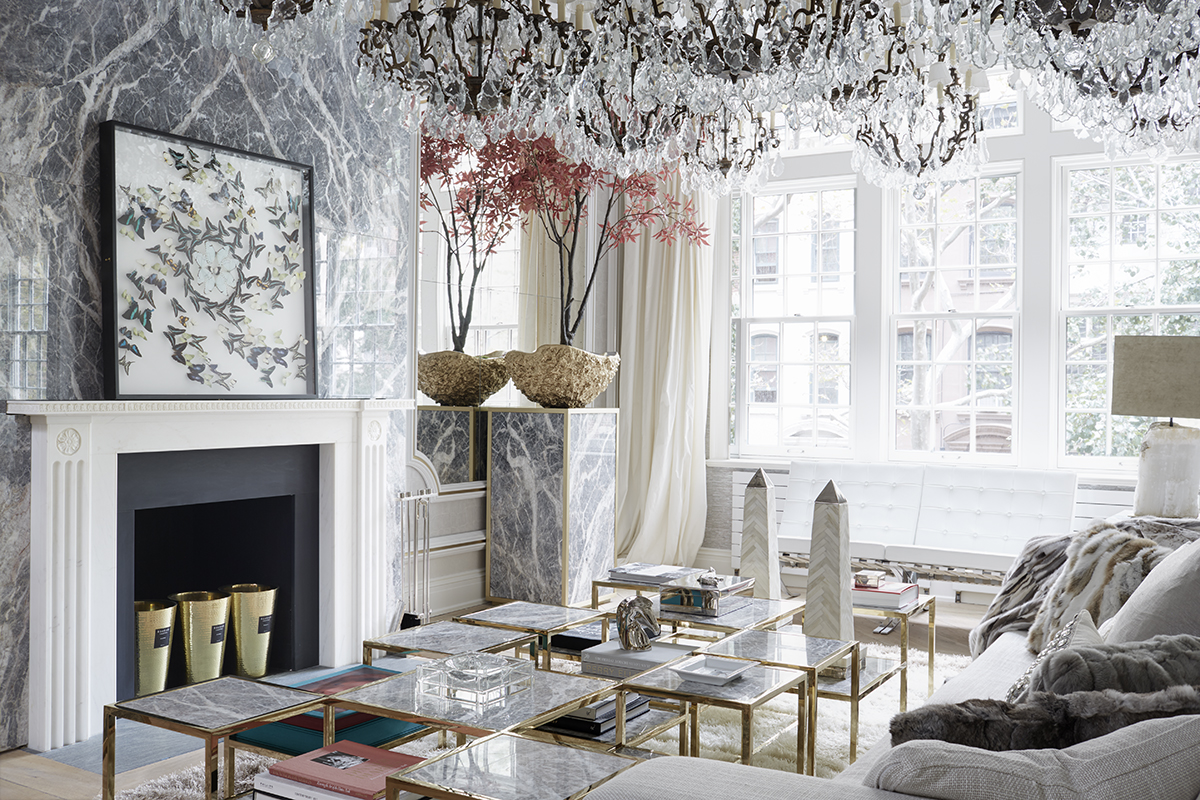
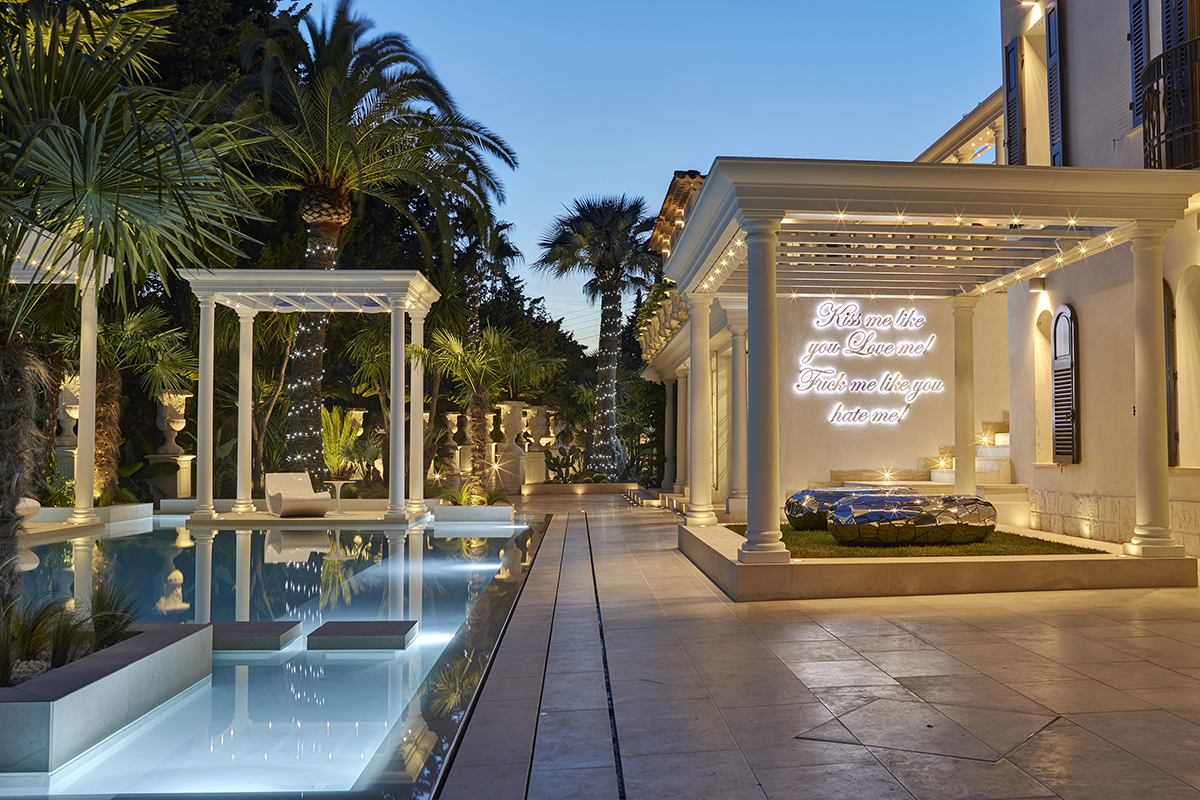
Plein has homes around the world, including his Manhattan penthouse and La Jungle du Roi villa in Cannes
Plein was not an outlier – it was a period of extravagance. The fashion industry in the late oughts valued spectacle, which, via live streaming and nascent social media platforms, could be viewed across the globe. Tom Ford at Saint Laurent showed in giant black Perspex boxes in the gardens of the Musée Rodin; Louis Vuitton under Marc Jacobs created visions of Paris with moving lifts modelled on the Ritz hotel. Chanel spearheaded the interactive, hyper-reality set with a supermarket, a rocket launch pad and a casino at the Grand Palais. The ‘immersive’ experience was born and Plein wanted to spoil his guests with the outlandish best.
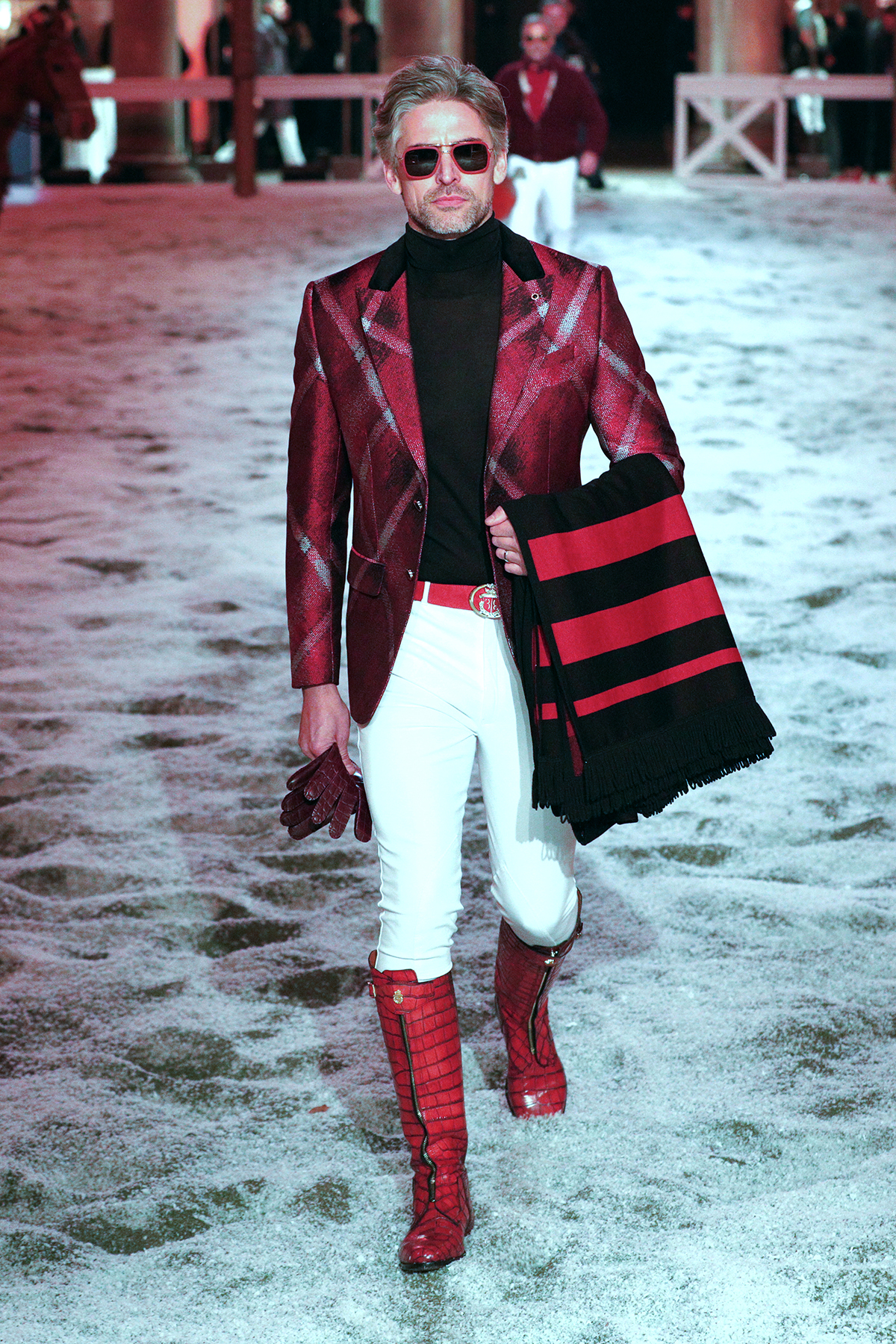
The Billionaire AW19 catwalk show in Milan
Sustainability issues, questions of timing and seasons have somewhat tempered the phenomena of the blockbuster show. Louis Vuitton presented its Cruise 2020 collection at the TWA terminal at JFK (now a design gem hotel) with a note that the plants used for the relatively simple décor would be redistributed or turned into compost. Excess and ‘waste’ is not in fashion. Powerhouses are acutely aware that we are seeking diverse indie and often ecologically minded activities, at least in the West.
Some brands are scaling down, while others are changing formats, taking the show on the road and off the traditional Paris, London, New York axis. The Philipp Plein show now is a relatively plain production that concentrates on the clothes. “We staged the last ‘big’ show in Brooklyn and invited 4,000 people,” says Plein. “From that moment on, I thought: ‘I don’t always want to give people what they expect.’ I want to focus on in-store events and see the investment showing up in sales,” he says. “We are a big player online, with €55million in sales, and this does not include channels such as Farfetch. But we believe in offline stores – you need to be successful in both. While more and more people might be consuming online, we still need to dream the dream, enter stores and touch the product. It’s an omni-channel solution.”
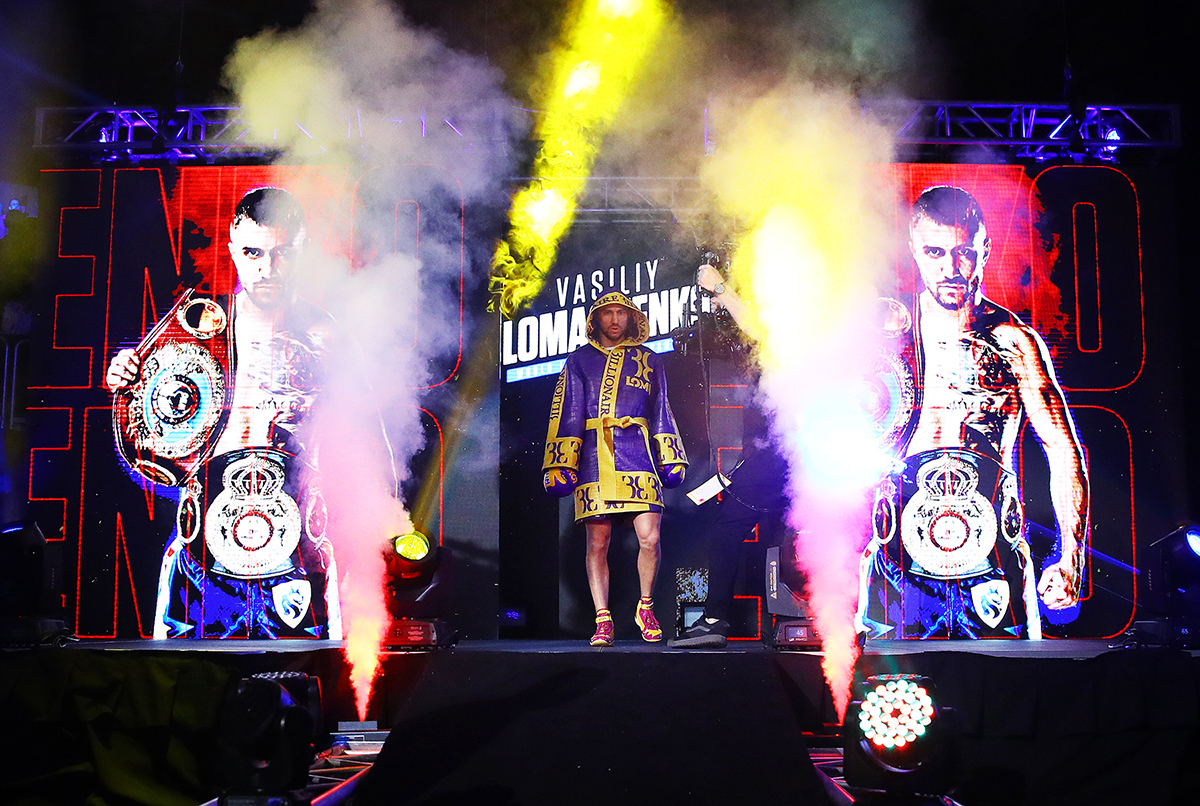
World champion boxer Vasyl Lomachenko is the face of Billionaire
While the old school and economy of fashion relied on editor diktats and designer worship, Plein sees the power pass to the consumers, who, via social media, exert influence and opine endlessly. “The consumer is much more powerful than the medium itself: choosing what information to consume, where to find the information and who to follow or unfollow. It’s much more democratic. In the past, we were able to ‘control’ the consumer, now the consumer ‘controls’ us,” concludes Plein.
Read more: At home with minimalist architect John Pawson
On Instagram, Plein is a dynamic, flashy act to follow, allowing access into his personal world. You’ll find him with his feet up in his marble and glass New York penthouse watching The Rolling Stones; in a helicopter with his five-year-old son flying across the Hudson River; or on-site overseeing the build of an Italianate mansion. One of his favourite photo- op situations is in the vicinity of premium cars. His brand recently collaborated with Mansory on a limited-edition series of ‘Star Trooper’ Mercedes G63 vehicles, for €500,000 each.
He looks fit (running six km a day), full of pluck and at the same time, with his cropped hair, stubble and brown eyes, approachable. He calls himself an “old-school guy” – he likes cars, women, the trappings that wealth can buy, sleek modernity and shiny surfaces. He does not smoke and rarely drinks. His vice is Red Bull. “I want to live a long time,” he adds. For all the wild projections, Plein is ultimately tidy. He has his son, who lives with his mother in Brazil. “He has a happy, normal life,” says Plein of his little boy. “Of course, he enters into my world and he is privileged in the sense that he can enjoy both points of view. As parents, we have a big obligation to our children – and how influential we are towards to them. They are born pure and what that child discovers and experiences, builds character and establishes a value system. It is a base that they will then develop themselves.”
As for kicking up his own feet, Plein – who is now in his forties – is dubious. He has weighed up the option of selling his business, but this would mean giving up a majority stake. “My father told me: ‘Money is an obligation. What would you do with this money? If you don’t know, then don’t sell.’ I think I have mastered my own industry – I don’t know anything else and I am not in need of money right now,” he concludes.
Where the brand ego stops and the real Philipp Plein actually starts is hard to gauge. You can’t imagine him seeking an alter-ego life with a rustic cabana and a plot of agave plants in Mexico. “It’s difficult for me,” he says. “I have grown into the brand and the brand became part of my own life and reflects pretty much my lifestyle. You don’t have too many designers who have a namesake brand anymore,” he says.
Plus, future ventures including scent (the men’s cologne, devised by famed ‘nose’ Alberto Morillas is launching this year) and cosmetics, depend on his presence. Earlier this year, he put in a bid in for the failing Roberto Cavalli brand, which subsequently filed for bankruptcy and now seems irretrievable, not a ‘renovation’ investment. “I look at fashion like a sport,” says Plein. “If you want to perform in any industry you have to be mentally fit and able to deliver results, and you are always under pressure,” he says. “Designers are drafted in like soccer players.” He admits that he does not have a lot to say on sustainability issues (gen up quick), but is happy that his manufacturing is Europe- based and small-factory led.
The exotic leathers might be on the way out and times might be turbulent, but Plein’s view on luxury remains constant. “We give people unnecessary things that no one needs, but everyone wants.”
View the designer’s collections: plein.com
This article was originally published in the Autumn 19 Issue.








